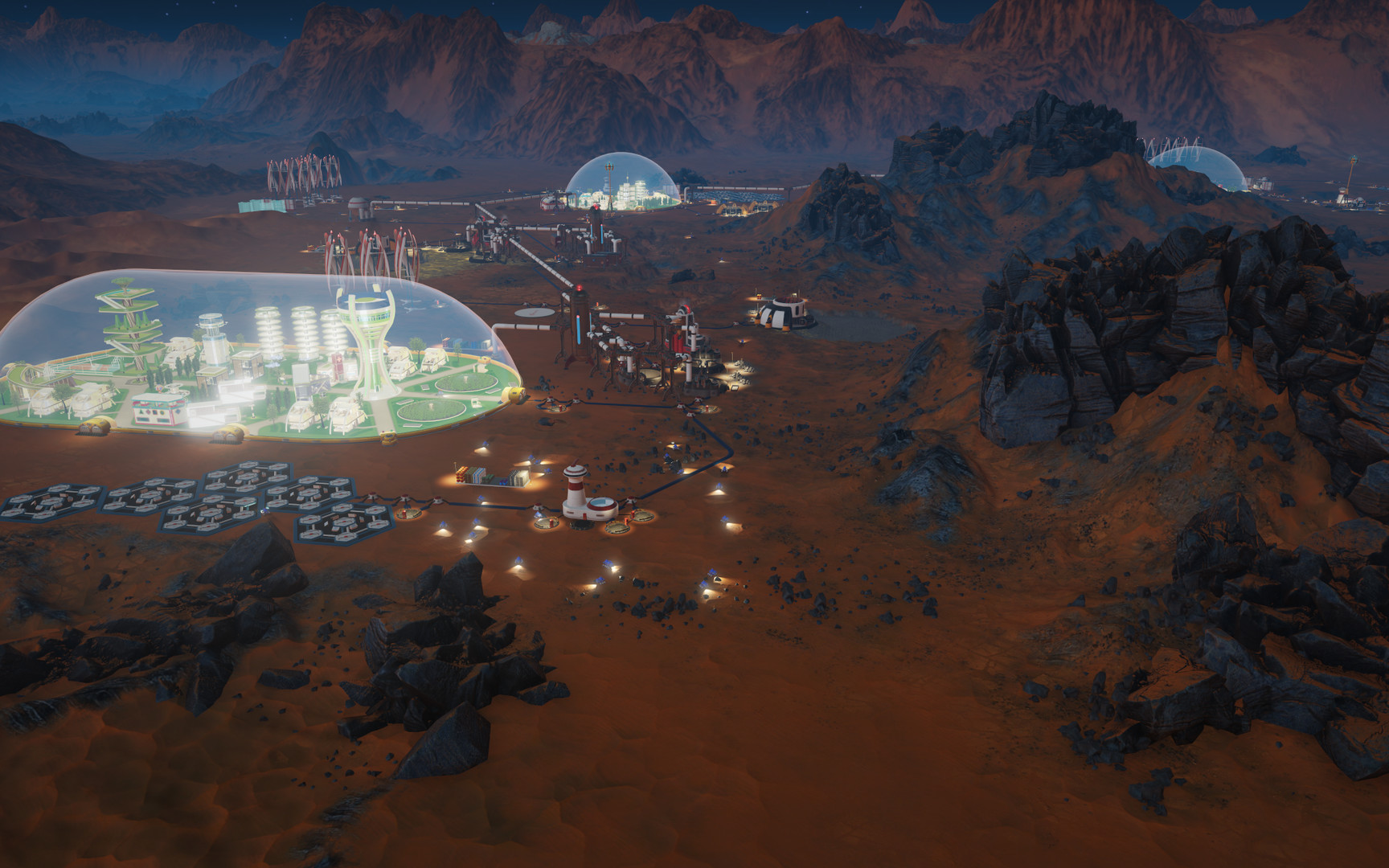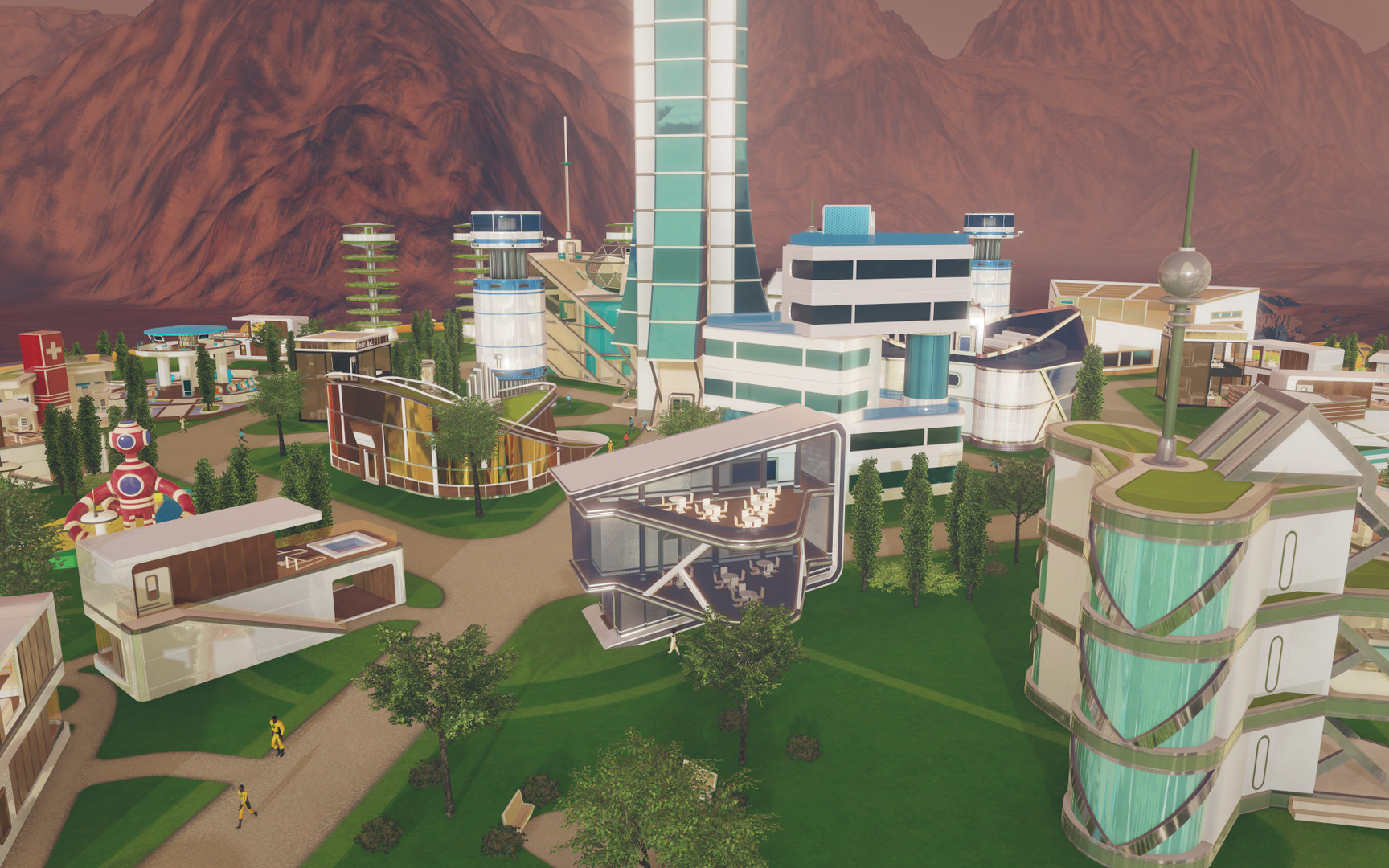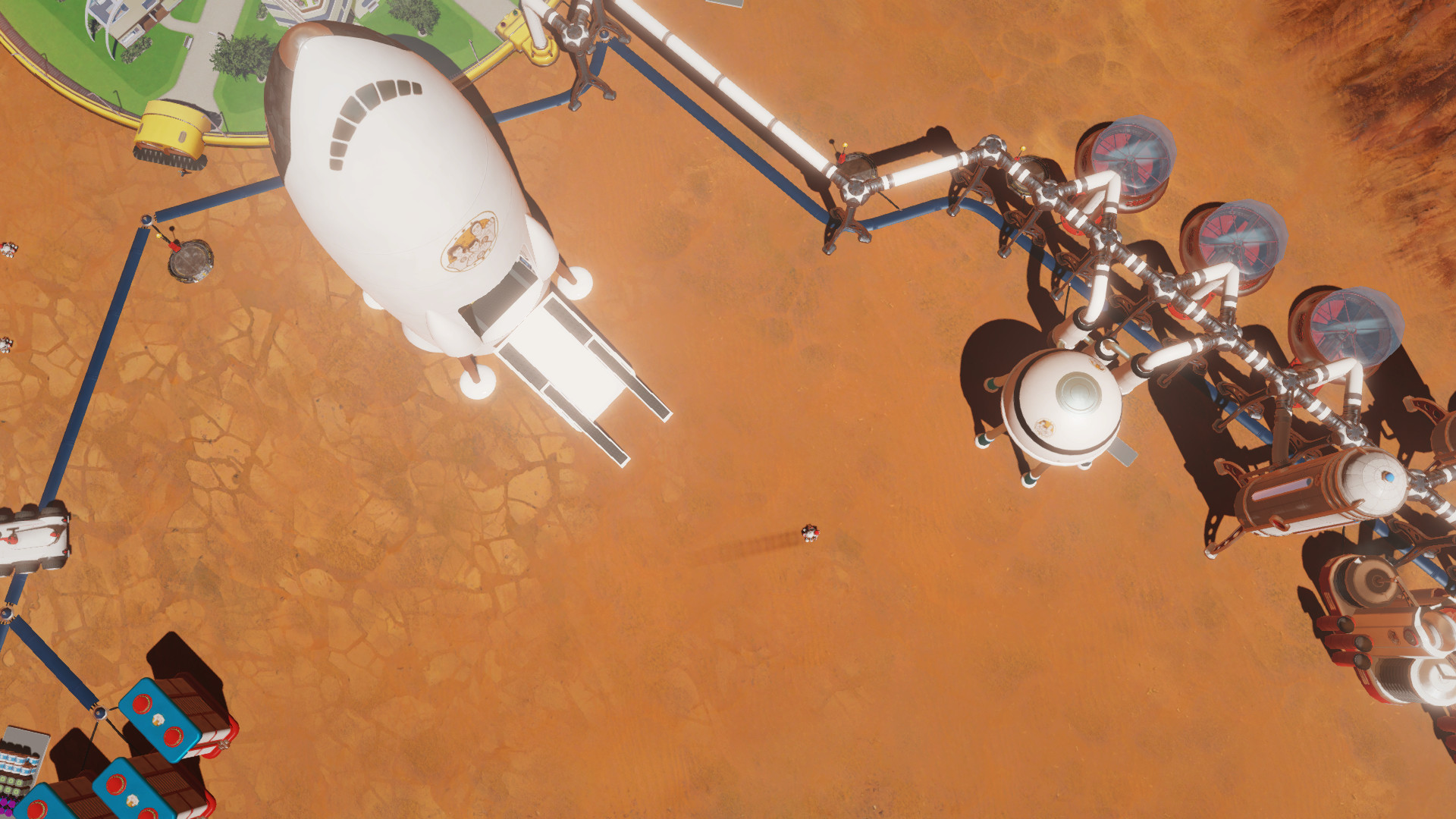
What future awaits humanity on its journey through the stars? How do you best account for the needs of the many and the sacrifices that must be made? High drama isn’t a foreign concept for deep space works of science fiction, especially when going to Mars. There’s always been this fantastical, almost gritty element to braving the land of the red sand. Then you have the mystery of the planet being this venerable force unto its own, producing all manner of turmoil. But first, how do you prepare to settle on the planet and make it your own?
"After determining all this along with the “mystery” of the playthrough, it’s off to Mars with all the materials, prefab buildings, Rovers and materials your heart desires."
Haemimont Games knows a thing or two about city-building games where molding society and watching the results unfold can be just as intriguing as mining for precious concrete, establishing lines of electricity and farming resources from one place to another. How well do all of these elements coalesce into Surviving Mars, especially when the sandbox nature of this retro-futuristic colonization adventure is the be-all, end-all of its design?
The premise is simple: As part of a space agency-funded mission to Mars, you have to establish livable conditions. From the outset, you can determine the agency to go with, which will specify your cargo limit and funding among other benefits. Then it’s on to your main occupation. I went with the Inventor since it meant that the hubs producing my drones, little autonomous robots doing all the heavy lifting, wouldn’t require any external power. After determining all this along with the “mystery” of the playthrough, it’s off to Mars with all the materials, prefab buildings, Rovers et al that your heart desires.
From the outset, the presentation is very robust, if not super-sleek. Alerts about your progress across different Sol days will come in; Milestones are set to celebrate your landing on the planet and achieving major goals like discovering water and building that first dome. However, for the most part, you’re pretty much left to your own devices. Constructing renewable forms of electricity, linking different sensors and concrete extractors, fixing a few dumping sites nearby and effectively terraforming the planet are a given. By choosing one’s landing zone though, you can net different resources. Pro-tip: Don’t invest too much in solar panels – they’re pretty much useless when it’s night-time on Mars. Luckily, they’re good for charging power accumulators during the day.
"Despite how daunting that all sounds, Surviving Mars does a decent job of nudging you into it."
Your RC Explorer is good for investigating anomalies and sites that contribute more research points towards technologies. The RC Rover is your miniature drone base, constructing buildings and managing resources until you can build Drone Hubs for specific areas. Meanwhile, the RC Transport will be your means of moving resources from one area to the other and extracting precious metals. After all, in order to establish Polymer and Machine Parts factories, you need skilled colonists.
To get skilled colonists – or any kind of colonist – you need a dome. To maintain said dome, you need food, water, oxygen, electricity and all other manner of technologies at your disposal. Oh, and make sure to have enough materials nearby for maintaining buildings when you’re not converting moisture into water and producing fuel for your space shuttles to ferry resources and colonists from Earth. That’s in between producing oxygen, junking buildings with depleted deposits and deciding what to sell back on Earth.
Despite how daunting that all sounds, Surviving Mars does a decent job of nudging you into it. The Easy Start option streamlines much of the choice while providing helpful hints and suggestions for what to build next. That being said, you’ll have occasions where the amount of Polymer and Electronics is just too darn low. Machines will idle by, waiting to be repaired, and you’ll have your hands full scanning the map and trying to effectively construct a dome before thinking about buying more rockets for more resources.
"When colonists shift to Mars, the game adds an extra layer of managing their sanity and well-being."
The interface is helpful enough at times as you can queue up different buildings, keep them pinned to your hot bar for quick navigation and effectively view stats while still keeping an eye on progress. I wish there were an option for selecting all orphan drones and assigning them to a specific controller (aside from just constructing another Drone Hub). Also, if I had abandoned a particular site with wires and pipes, then it would have been nice to not be notified of their faults again and again (that too without the specific research required to completely clear them away). Sure it gets fairly complicated to manage as your space metropolis grows but that’s to be expected in games like this.
When colonists shift to Mars, the game adds an extra layer of management with their sanity and well-being. If you don’t keep them happy and relaxed, then those colonists won’t be hanging around for long. Construct bars and gardens along with hospitals to keep them relaxed and healthy. You can also construct schools and nurseries to cultivate different traits in colonists. Of course, it’s not difficult to simply let every crazed nut job on the next shuttle to Mars and watch how things take a turn for the worst. Then again, even that bright-eyed charismatic leader that emerged during one playthrough succumbed to alcoholism at some point. Aside from creating buildings and more buildings – not to mention choosing the odd dialogue option for scolding the man – there wasn’t much I could do to change his mind.
There’s a general hands-off approach to the malleability of your colonists. Different research can offer more control though, like controlling their thoughts and forcing them to enjoy their surroundings against their will. If you find that your population isn’t too crazy about procreation, then invest in cloning or choose an agency which prioritizes higher birth rates. That being said, colonists have these intriguing traits but even when certain figures manifest, you won’t really feel like they’re unique in the long run.
"Granted, different groups will rise up when the Mysteries take centre stage though like the mysterious cubes that your people either want to worship or ban."
Granted, different groups will rise up when the Mysteries take centre stage like the mysterious shapes that your people either want to worship or ban. There are Mysteries that reference the dreaded HAL 9000, pit you against a Total Recall-esque corporation vying for control, a horrifying pandemic and much more. Completing them even nets you some neat rewards but beyond that, they’re fairly linear, by-the-book storylines that serve to intrigue rather than providing any real end-game potential. Also, for all the different ways to customize one’s mission and colonies, not to mention the Mysteries apparent, the starting grind is usually the same every time. This isn’t a negative point but it is interesting all the same. Meteor showers, dust storms and whatnot are mundane and not terribly consequential.
Playing through a typical game of Surviving Mars from scratch isn’t bad. You’ll be embroiled in hours upon hours of resource management, struggling to keep expanding before all those precious metals are gone. You can take the pace as slow or as fast as you’d like but the real drive is in constructing a colony that’s like a little bustling ant-farm. For some players, this won’t be enough and the urge for conquest, destruction, diplomacy, expansion and more complex progression on a grander scale will be desired.
For others, that ideal utopia or haphazard space mess is appealing enough. Surviving Mars does cater to one group decently enough though it can be a little tough to fully get a handle on at times. While I’m not sure it has the distinct flavour that defines Tropico, the scale of Stellaris or the grand vision of Civilization, Surviving Mars does have it’s own brand of SimCity-ification that delivers in a rather satisfactory manner.
This game was reviewed on PC.
Retro sci-fi aesthetic is aided by wonderful music. Robust and responsive interface. Different research technologies open up interesting opportunities. Mysteries offer unique storylines to explore later. Various agencies, traits and player occupation offer fresh playthroughs.
Several aspects like meteor showers and dust storms aren't terribly interesting. Citizens feel downplayed even with their unique traits. A few quality of life changes needed. Doesn't have a particularly deep end-game, especially with the linear nature of Mysteries. Somewhat tough learning curve, especially with regards to properly exploiting resources in the early going.



















